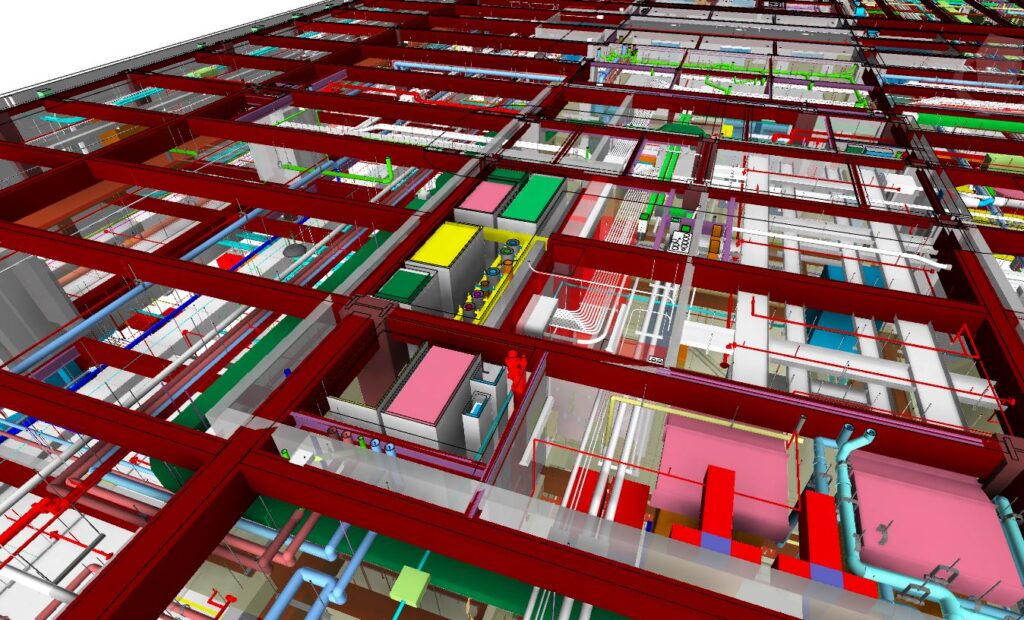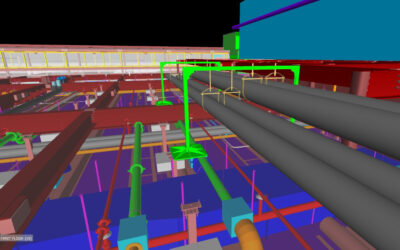What Will the Future of the Electrical Industry Look Like?
Technology is constantly shaping the electrical industry—changing the way we approach the design, pre-construction, and construction of electrical systems. With new innovations being developed every day, it is important to be informed about the latest developments so that you can stay competitive. For electrical contractors this is especially important, as the electrical industry is finally catching up with the rest of the trades in its adoption of Building Information Modeling (BIM) technology. How is BIM technology reshaping the electrical industry, and what is driving its rampant adoption? In this post, we will discuss three reasons BIM services are in high demand among those in the electrical industry.
What Will Impact the Future of the Electrical Industry?
One of the most significant trends in the electrical industry has been its adoption of BIM technology. BIM is a process that allows contractors, architects, and engineers to contribute information about a built asset in a shared digital space. This facilitates the planning, design, and construction of new buildings and structures.
Why is BIM Technology Important?
As electrical construction becomes more complex, many electrical contractors are looking to simplify their workload. By using BIM technology, contractors can streamline their project workflows—saving time and money.
Although other trades often use BIM to optimize their projects, the electrical trade has been slow to adopt the process until recently. According to an article published by Electrical Contractor, “electrical contractors may be the last to embrace BIM, but it is not for lack of interest.” As BIM technology becomes commonplace in the construction industry, the electrical trade is catching on to its benefits. With BIM technology, electrical contractors can visualize the entire construction process before installation starts—allowing them to identify and resolve design issues before they can cause project delays. Using the detailed information given by BIM models, contractors can reduce waste and improve project efficiency—drastically cutting costs.
Here are three reasons why BIM technology is being adopted by the electrical industry:
1. Reduces Project Costs
Without a clear visualization of the project, contractors often face design errors or material surpluses when construction begins. These errors can significantly affect project costs—hurting the bottom line. To address these common issues, electrical contractors are increasingly turning to BIM.
With BIM technology, contractors can access more detailed models of the structure or building—improving their understanding of what is being built. This information allows them to get more accurate estimates of material quantities, resolve design flaws, and eliminate clashes between trades. By improving the design of electrical systems and reducing material waste, BIM allows contractors to reduce their project costs significantly.
2. Supports Prefabrication
Prefabrication is another key trend within the electrical industry. By constructing electrical materials before reaching the job site, contractors can save significant time and money during installation. According to Jerry Hayes, President of United Electric Co., prefabrication is essential for electrical contractors. In Electrical Contractor, Hayes predicted, “There will be electrical contractors that externalize the work by engaging in prefab and those that used to be in the electrical contracting business.”
As prefabrication leads the way for electrical contractors, it becomes important for contractors to choose the right technology to carry out prefabrication. BIM services facilitate prefabrication, making it easy to design and produce parts that will fit together seamlessly during installation. This is because BIM models are coordinated and give contractors the level of detail they need to ensure their system will fit according to the design. As prefabrication continues to drive the electrical industry forward, BIM adoption becomes necessary for contractors to ensure successful installation.
3. Simplifies Retrofit Projects
It is often difficult for electrical contractors to install new or modified equipment in existing spaces, especially if the as-built design is inefficient. With BIM, contractors can reference accurate models that offer a better visualization of the as-built structure. This information provides them with the level of detail they need to successfully add new components to the existing building. BIM technology can also help contractors identify ways to improve energy efficiency or troubleshoot any issues that occur during a retrofit. By using BIM during a retrofit project, electrical contractors can ensure that installation goes smoothly and improve project efficiency.
Using BIM Technology to Optimize Your Next Electrical Project
As BIM continues to be a leading innovation within the construction industry, electrical contractors must adopt BIM technology to stay competitive. Using BIM, electrical contractors can support their bottom line by reducing material waste, driving more accurate schedules, and streamlining their project workflows.
Learn How We Can Help You Adapt
As you adjust to technological changes within your industry, consider partnering with DJM to keep your business competitive. We understand the unique challenges you face and the innovations that can make a difference.
Contact DJM today for a free consultation and learn how our BIM specialists can help your business stay competitive in a changing industry.



